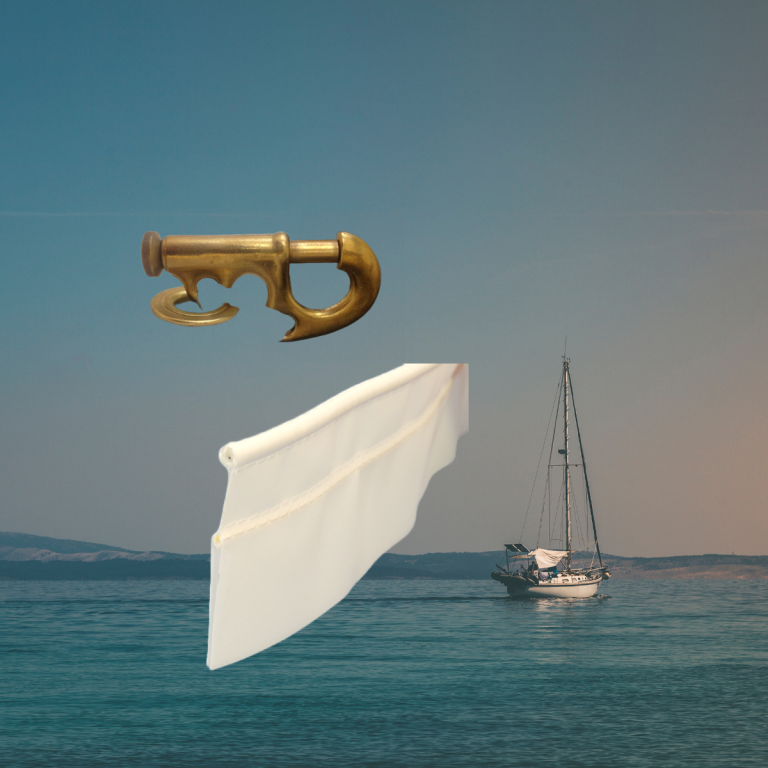Hank on Sails vs Roller Furling
What is the right system for you?

If you are a sailor who cares about safety, sail shape, performance, you might be wondering whether to choose hank on sails or roller furling sails for your headsail. In this blog post, I will compare the pros and cons of both systems and share some tips on how to get the best out of them.
Hank on sails are the traditional way of attaching the luff of the headsail directly to the forestay using metal or plastic clips called hanks. They are simple, reliable and offer optimal sail shape for different wind conditions. You can change headsails depending on your needs, such as a jib for upwind sailing or a drifter for light air. You can also lower the sail in strong winds by releasing the halyard, reducing windage and stress on the rig. Hank on sails were the preferred sail type by many racers and offshore cruisers who value performance and versatility.
However, hank on sails also have some drawbacks. They require more work and time to hoist, douse and stow. You must go forward to the bow to handle the sail, which can be dangerous in rough seas or bad weather. You also need more storage space for your sail inventory and must be vigilant about not tearing or ripping them during handling. Hank on sails have limited reefing options, usually only one or two, which can compromise sail shape and balance when partially furled.
Roller furling systems are the modern alternative that allow you to adjust the size of the headsail from the cockpit by rolling it around a rotating extrusion that covers the forestay. They are convenient, easy to deploy by one person if necessary and safe to use. You can deploy, reef and stow the sail with a single line, without leaving the cockpit. You can also fine-tune the sail area to match the wind speed and direction, improving your boat speed and comfort. Roller furling sails are ideal for all types of sailing in all weather conditions. With Alado’s twin luff grooves, you can even add two sails and eliminate the need for spinnakers, drifters and reduce accidental jibe.
Not all Roller Furling Systems are designed the same way. Systems that add mechanical complexities such as bearings, swivel joints and other moving parts can affect your boat's performance, stability, and safety. The more complex the moving parts are the more likely they can also fail or jam due to corrosion, wear, or improper maintenance, leaving you with an uncontrollable sail in a critical situation.
Having a Roller Furling system fail to retract can create extreme stress on the rigging, sail and in extreme cases can expose the boat to nose diving in the potentially lethal waves or even a knock down.
Alado Roller Furling is designed without the use of any of the above complexities, is 100% maintenance free and jam free due to NO bearings or swivels, allowing the crew to count on many hours of reliable performance regardless of whether it’s a sporty sail or race, heavy weather, or a light air cruise.
Alado is designed to be installed on deck and in most cases, going aloft in an “air chair” is not needed.
One of the largest problems that the sailing community is seeing in today’s market is the high cost and unreliable availability of sailboat rigging services.
Why DIY?
Recently a San Franciso Bay Sailboat Owner purchased an Alado System for his racing sailboat, but due to time constraints of schedule and overall apprehension of doing the installation themselves, they decided to have it installed by a Rigging Service.
They scheduled a Rigging Service and waited 1 month for an appointment only to have the Rigging Service fail to show up. On the re-scheduled appointment, the Rigging Service (who charged the owner in advance for the site visit), refused to install the Alado System, saying that since he did not sell the owner his well-known brand for $5000+, he was not going to install the Alado.
The owner (who paid under $2300.00 for his Alado) had initially lacked the confidence to do the installation himself but with the telephone support of our Technical Manager at AladoFurler.com the owner successfully completed the installation himself.
As well as the owner’s great feelings of empowerment by installing the Alado Roller Furler themselves, they overcame a huge Conflict of Interest challenge by the Rigging Service. Simply put, the Rigging Service crossed the line of Customer Service and Choice.
Alado Furler has proven time and time again that when it comes to Roller Furling, price is not relative to performance in sailboats ranging from 23 feet to 70 feet. Unless you are looking for features such as electric or hydraulic Roller Furling, you can save thousands in unnecessary labor costs by using our Alado System. Even if you do need assistance, the chances are that it will be accomplished by less expensive help.
So how do you decide which system is best for you? It depends on your sailing style, DIY skills and product preferences. If you are looking for simplicity, reliability, and performance, you might prefer hank on sails. If you are looking for safety and convenience, you might prefer roller furling sails. Of course, you can also have an Alado Furler “behind the mast roller furling system, an Alado Genoa and a hank on staysail for a cutter rig, giving you more options, flexibility, and safety.




We need your consent to load the translations
We use a third-party service to translate the website content that may collect data about your activity. Please review the details in the privacy policy and accept the service to view the translations.

